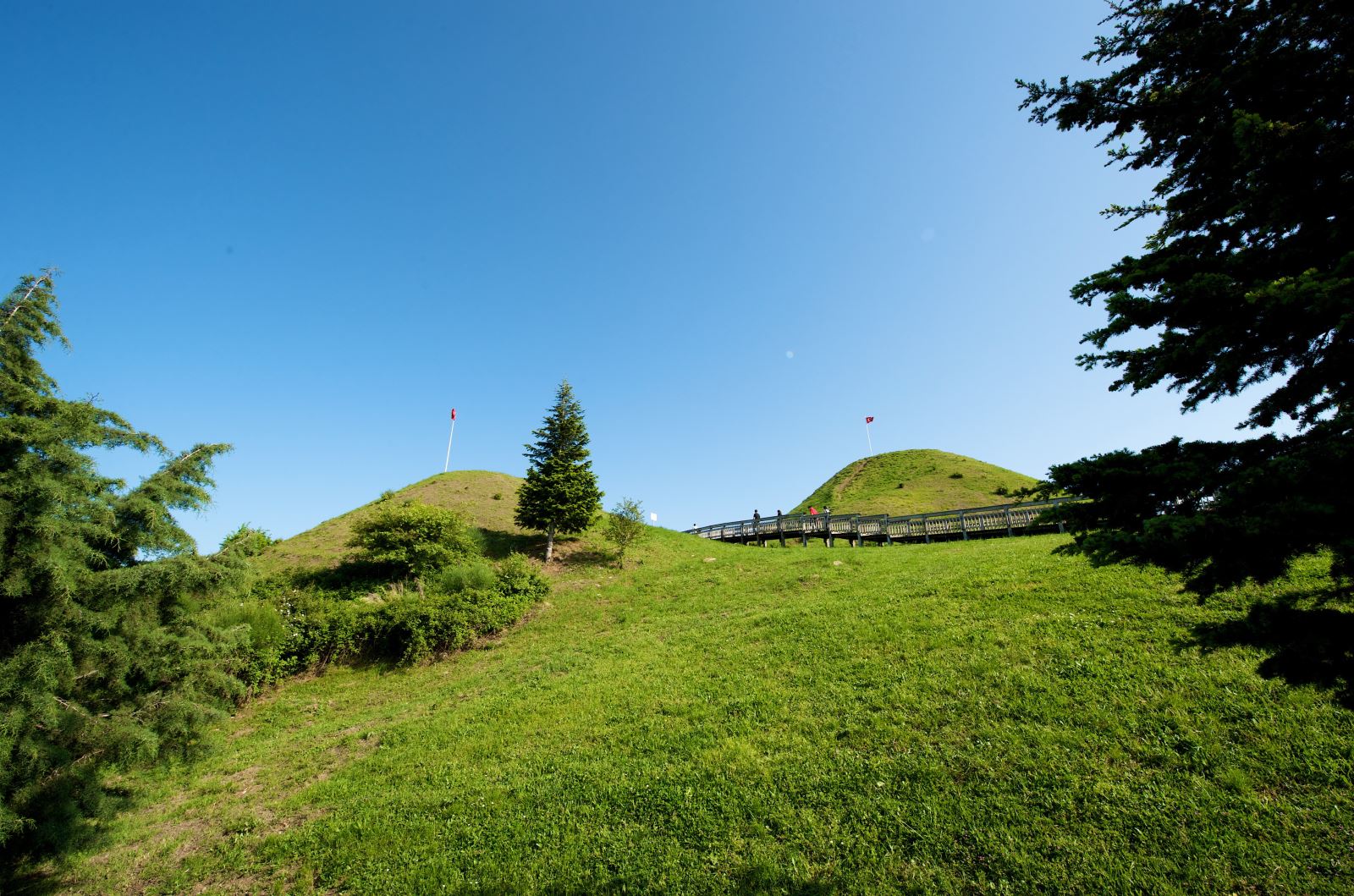Amisos Hill, located approximately four kilometers northwest of Samsun city center, on the Samsun-Sinop highway, represents an important archaeological site that has been inhabited since prehistoric times. The area, also known in modern times as “Baruthane Tumuli,” holds a special place in Samsun's cultural heritage with its Hellenistic Period burial structures, necropolis areas, and rich archaeological materials unearthed through excavations.

Amisos Hill (Türkiye Culture Portal)
Historical Development Process
The history of Amisos can be examined in four basic phases:
- Early 6th century BCE: Miletans dominating Amisos through the colony they founded in Sinop and using it as a trade point connecting the Black Sea with the inner regions of Anatolia.
- First half of the 6th century BCE: Cappadocians settling in the region.
- Mid-6th century BCE: The city's development with the local Cappadocian ruler granting settlement permission to Phocaean colonists.
- 437 BCE: Athenians arriving from Sinop settling and the city's name being changed to Peiraieos.
During this period, the Miletans built the city walls on Toraman Hill and established the Upper and Lower City arrangements, along with religious and public structures.
City Structure and Archaeological Findings
It is understood that the Upper City, built on Toraman Hill, covered an area of approximately 44 hectares. Here, the city's elite class, consisting of administrators, religious figures, and merchants, resided, while the Lower City, located to the east of the city, stood out with its commercial functions. The port played a fundamental role in the economic vitality of this settlement.
The cemetery areas are located on the eastern, western, and southern slopes of the city. During excavations, tumuli, sarcophagi, urn-type graves, and burial chambers were found. In a tomb discovered during road construction in 1995 and unearthed through scientific excavations, numerous intricately crafted gold ornaments, referred to as the Amisos Treasure, were found.

Burial Chamber (Türkiye Culture Portal)
Baruthane Tumuli
During excavations started in 2004, burial structures belonging to the Hellenistic Period (330–30 BCE) were unearthed from under two tumuli in the Baruthane area. Among these tombs, determined to belong to the Mithridatic dynasty, three-roomed painted tombs were found under the northern hill, and two-roomed painted tombs under the southern hill. These tombs have been opened to visitors under the supervision of the Ministry of Culture and Tourism and through a joint effort by Samsun Museum and Istanbul University.
Sociocultural and Economic Structure
Amisos experienced its golden age, especially during the reign of Mithridates VI; it became an important center in culture, art, and economy. Coin mints and ceramic workshops from the period demonstrate the city's wealth and cultural production. The symbols found in tomb findings also reveal the artistic and symbolic understanding of the period.
Current Situation
Amisos Hill is currently organized as an open-air museum and has been transformed into a tourist attraction through environmental landscaping applications. Visitors can reach the hill by cable car or road; thanks to the Amisos Cafe and souvenir shops located here, they can both acquire historical information and enjoy the panoramic city view.
Although some of the burial chambers are closed to visitors due to the risk of collapse, the region remains one of the primary places that preserve Samsun's historical identity with its archaeological and cultural values.


